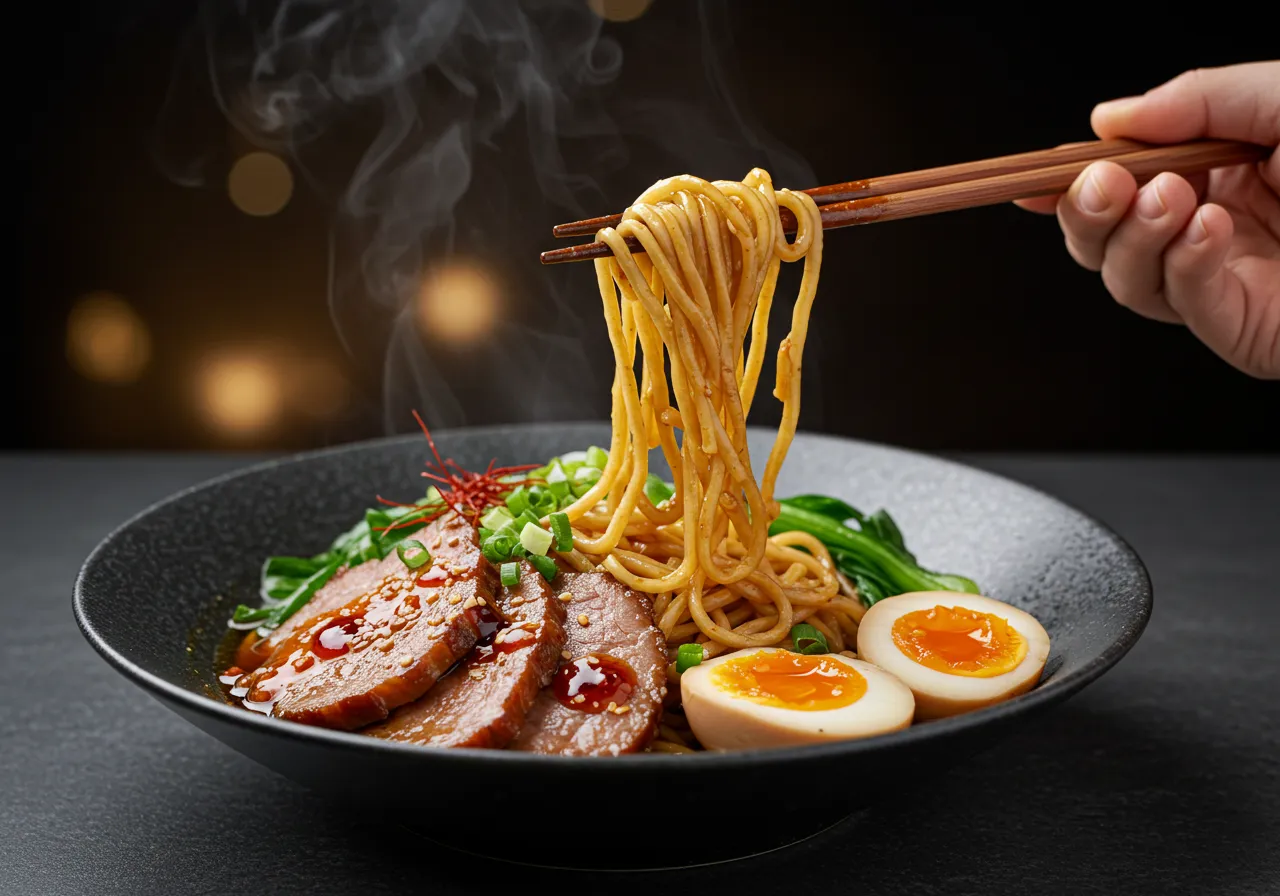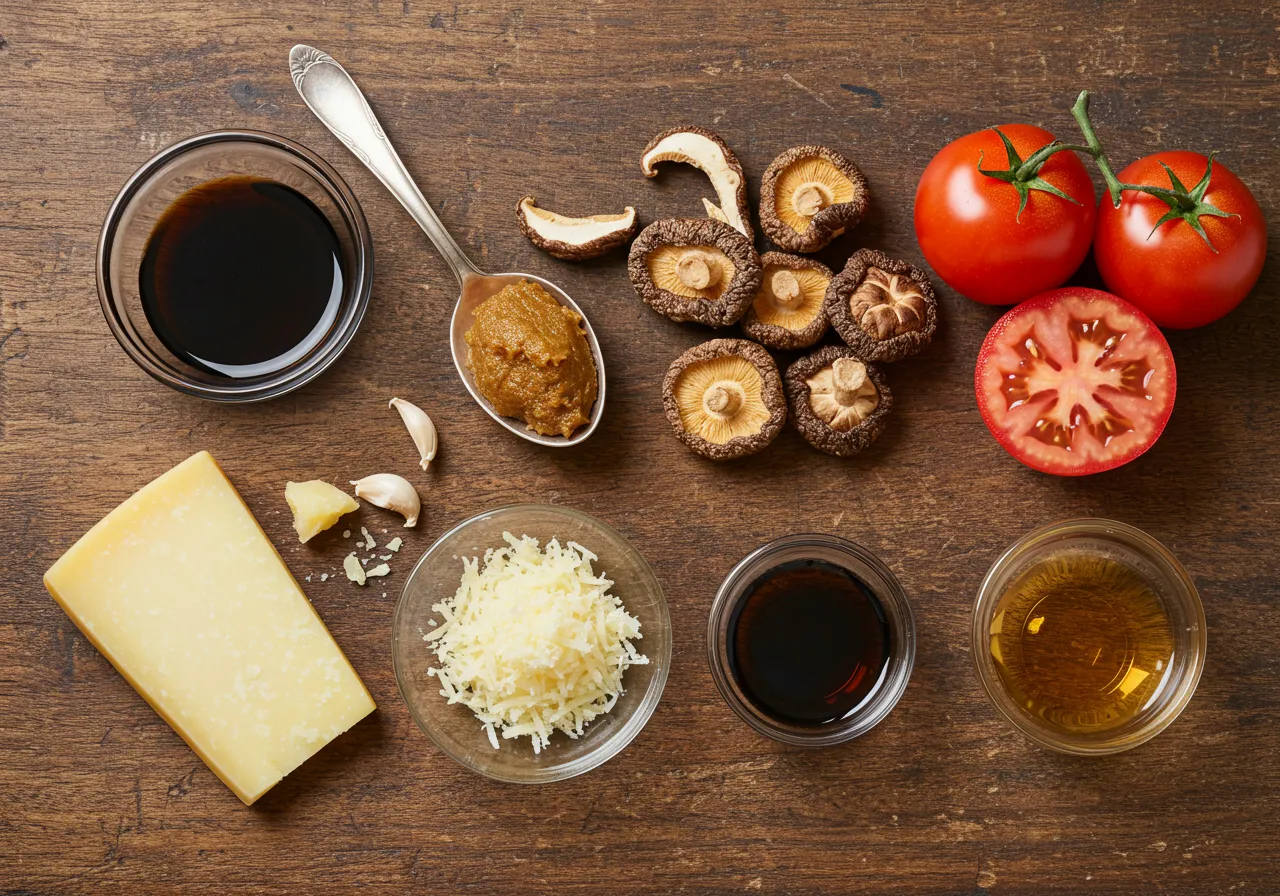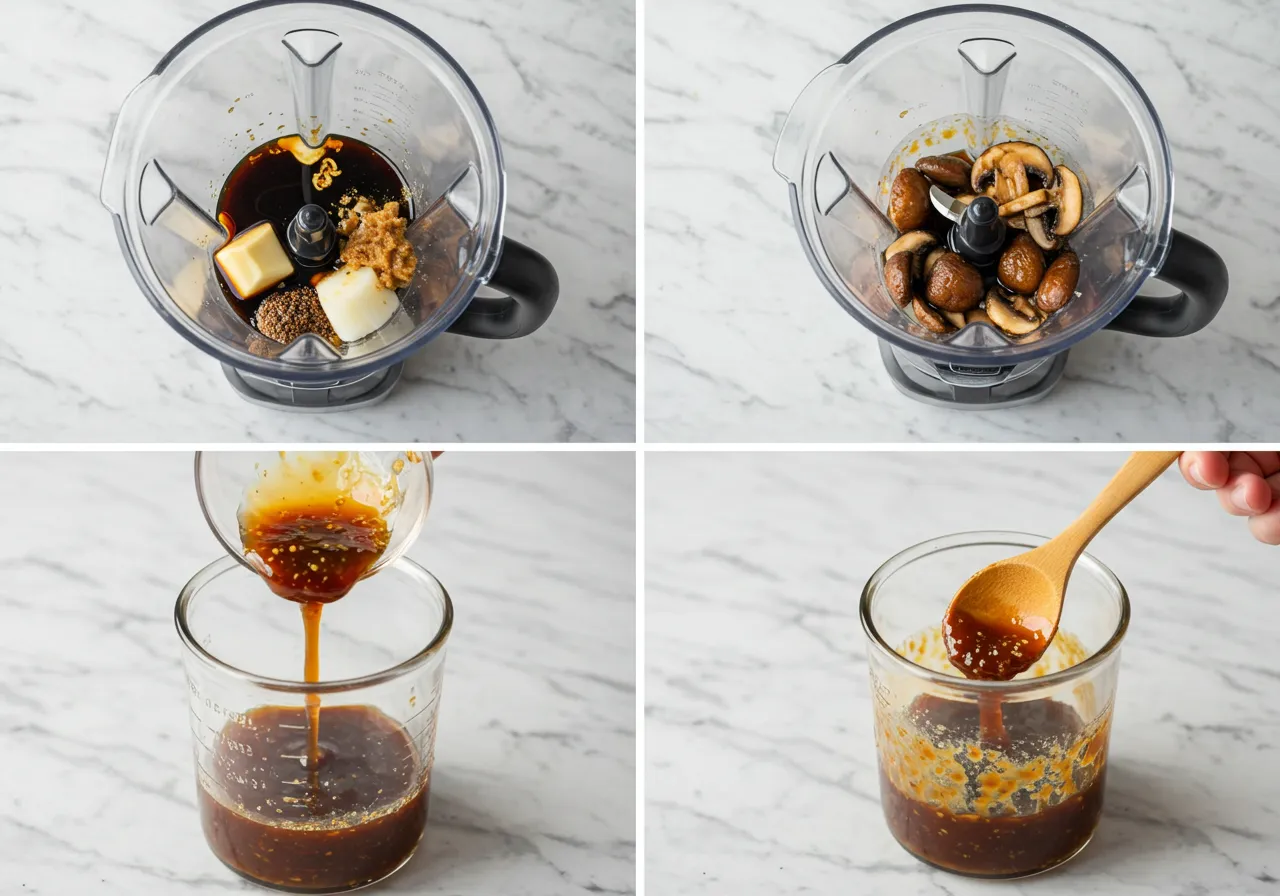Creating depth and complexity in cooking is essential for elevating flavors. One ingredient that plays a crucial role in achieving this is a rich, umami-packed sauce. Known as the “fifth taste,” umami enhances natural flavors, making dishes more satisfying and well-balanced. Whether used in soups, stir-fries, or marinades, this flavor booster has become a staple for both home cooks and professional chefs.
Print
Homemade Umami Sauce
- Total Time: 17 minutes
- Yield: 1 ½ cups
- Diet: Gluten Free
Description
This homemade umami sauce is a rich, savory, and flavor-packed condiment that enhances any dish. Made with soy sauce, miso paste, mushrooms, and anchovies, it provides a deep, complex taste that elevates soups, marinades, grilled meats, stir-fries, and even salad dressings. Perfect for those looking to add a bold umami punch to their cooking, this sauce is easy to make and customizable for different diets, including a vegan option.
Ingredients
Base Ingredients
- ½ cup soy sauce (or tamari for gluten-free)
- ¼ cup miso paste (white or red, depending on preference)
- ¼ cup fish sauce (or 2 tbsp nutritional yeast for a vegan version)
- ¼ cup roasted mushrooms (shiitake or cremini, finely chopped)
- 2 tbsp pureed sun-dried tomatoes
- 2 tbsp grated Parmesan cheese (omit for vegan)
- 1 tbsp honey or maple syrup (for balance)
- 1 tbsp rice vinegar (for acidity)
- 1 tbsp toasted sesame oil
Optional Enhancers
- 1 tsp anchovy paste (for extra depth, omit for vegan)
- 1 tsp Worcestershire sauce (gluten-free if needed)
- 1 tsp molasses (for extra richness)
- ½ tsp garlic powder
- ½ tsp onion powder
- ¼ tsp smoked paprika
Instructions
Step 1: Blend the Ingredients
- In a blender or food processor, combine soy sauce, miso paste, fish sauce, mushrooms, sun-dried tomatoes, Parmesan, honey, rice vinegar, and sesame oil.
- If using anchovy paste, Worcestershire sauce, molasses, garlic powder, onion powder, or smoked paprika, add them to the blender.
Step 2: Blend Until Smooth
- Blend on high speed until the mixture becomes smooth and well-emulsified (about 30–60 seconds).
Step 3: Simmer for Depth
- Pour the blended sauce into a small saucepan over low heat. Simmer for 5–7 minutes, stirring occasionally, to enhance the depth of flavor.
Step 4: Strain and Store
- Remove from heat and strain through a fine-mesh sieve into a sterilized glass jar for a smoother consistency (optional).
- Let it cool to room temperature before sealing the jar and refrigerating.
Notes
- Vegan Option: Use tamari instead of soy sauce, nutritional yeast instead of fish sauce, and omit anchovy paste & Parmesan.
- Storage: Store in an airtight container in the refrigerator for up to 2 weeks. Freeze in small portions (like ice cube trays) for longer storage.
- Adjust Flavor: Add more honey for sweetness, extra vinegar for acidity, or more soy sauce for saltiness.
- Uses: Drizzle over grilled meats, roasted vegetables, stir-fries, noodles, rice dishes, or mix into dressings and marinades.
- Prep Time: 10 minutes
- Cook Time: 7 minutes
- Category: Condiments & Sauces
- Method: Blended & Simmered
- Cuisine: Japanese, Fusion
What Makes This Flavor Booster Special?
A Key to Deep, Savory Tastes
This sauce is a concentrated enhancer derived from ingredients naturally high in glutamates, such as soy sauce, miso, tomatoes, and mushrooms. Unlike salt or sugar, which contribute a singular taste, it amplifies multiple flavor dimensions, making every bite richer and more satisfying.
In 1908, Japanese chemist Kikunae Ikeda first discovered and defined the concept of “umami.”. While studying kombu, a type of seaweed, he discovered that glutamates were responsible for its unique taste. His findings led to the recognition of umami as an essential taste and influenced the development of modern condiments that intensify food’s natural flavors.
Why Add This Ingredient to Your Cooking?
A Simple Way to Elevate Everyday Dishes
Using this savory enhancer in recipes boosts overall flavor complexity. It enhances the rich, deep elements in broths, sauces, and stir-fries. It also balances sweet, salty, and acidic notes for a more refined taste. By incorporating this ingredient, it’s possible to reduce added salt while still achieving a satisfying, well-rounded flavor. For even more depth, pair it with browning sauce to create an even more complex profile.
How Does Umami Sauce Enhance Flavor?
The depth of this ingredient comes from its high concentration of glutamates and nucleotides, compounds that interact with taste receptors to create an extended savory experience. For example, adding it to a vegetable stir-fry intensifies the dish’s natural sweetness while deepening its overall taste.
Best Ways to Use Umami Sauce in Cooking
There are many ways to incorporate this ingredient into your meals. Adding a small amount to soups and stews makes broths richer and more complex. Using it in marinades with garlic, ginger, and citrus enhances the depth of meats and tofu. Stirring it into pasta sauces, whether tomato-based or creamy, results in a more balanced and layered taste. A few drops in salad dressings can add depth, while drizzling it over roasted vegetables enhances caramelization and intensifies natural sweetness.
Looking for more ways to enhance flavor? Check out Boom Boom Sauce for a bold and tangy option.

Core Ingredients That Contribute to This Rich Flavor
Key Components for Maximum Depth of Umami Sauce
Many ingredients provide the distinct depth associated with umami. Soy sauce offers a salty and rich foundation, while miso contributes a deep, fermented quality. Tomatoes contain naturally occurring glutamates, adding both acidity and sweetness. Mushrooms bring an earthy depth, and anchovies provide a bold, briny intensity.
To maintain ingredient quality, proper storage is essential. Learn How to Properly Store Soy Sauce to ensure lasting freshness.
Enhancing the Effect with Complementary Ingredients
Pairing umami-rich ingredients with other complementary flavors amplifies their impact. Parmesan cheese enriches pasta dishes with its strong savory notes. Fish sauce enhances stir-fries and broths. Seaweed introduces a mild oceanic taste, while dark-fleshed fish like tuna and salmon contribute additional depth.
For seafood lovers, try incorporating this flavor booster into Seafood Boil Sauce to create a richer and more complex dish.

How to Create Your Umami Sauce
An Easy Homemade Umami Sauce
Ingredients:
- ½ cup soy sauce or tamari
- ¼ cup pureed tomatoes or miso paste
- 2 tbsp fish sauce or nutritional yeast (for a vegan alternative)
- ¼ cup roasted mushrooms or anchovies
- 1 tsp honey or molasses (to balance flavors)
Instructions:
- Blend all ingredients until smooth.
- Store in a sealed container and refrigerate.
- Use it in marinades, salad dressings, or as a finishing sauce to enhance dishes.
For another umami-packed condiment, check out Guajillo Sauce to explore exciting new flavors.

Health Benefits of Umami Sauce
A Smarter Way to Enhance Taste While Staying Healthy
Adding this sauce to meals offers numerous health benefits. It allows for reduced salt intake without compromising taste. Fermented ingredients like miso contain probiotics that support digestion and gut health. Nutrient-rich components such as mushrooms and seaweed provide essential minerals, including potassium and iodine.
Looking for more ways to enhance meals with rich, savory flavors? Explore the Ultimate Guide to Fajita Sauce for another delicious and nutritious option.
Frequently Asked Questions About Umami Sauce
What Does It Taste Like?
It delivers a deep, meaty richness with earthy and slightly sweet undertones.
Can It Be Used in Plant-Based Recipes?
Yes! A vegan-friendly version can be made using tamari, miso, and nutritional yeast.
Is It a Good Addition to Salads?
Absolutely! Adding a few drops to salad dressings enhances their complexity and pairs well with citrus, avocado, and fresh herbs. Try using it in a Greek Salad for a more vibrant flavor.
How Should It Be Stored?
- Keep in an airtight container and refrigerate.
- Homemade versions last up to two weeks.
- To extend shelf life, freeze in small portions using ice cube trays for easy storage and use.
Final Thoughts: Why This Flavor Booster Belongs in Every Kitchen
A well-balanced, deeply flavorful dish often comes down to using the right ingredients. This sauce plays a vital role in intensifying natural flavors and creating complexity in recipes. Whether mixed into stir-fries, pasta sauces, marinades, or dressings, its ability to naturally enhance taste makes it an essential addition to any pantry. Start experimenting with this versatile ingredient and experience how it transforms cooking.
For expert insights into enhancing flavors, visit Bon Appétit or Serious Eats to explore more culinary inspiration.


4 thoughts on “Umami Sauce The Ultimate Flavor Booster You Need”